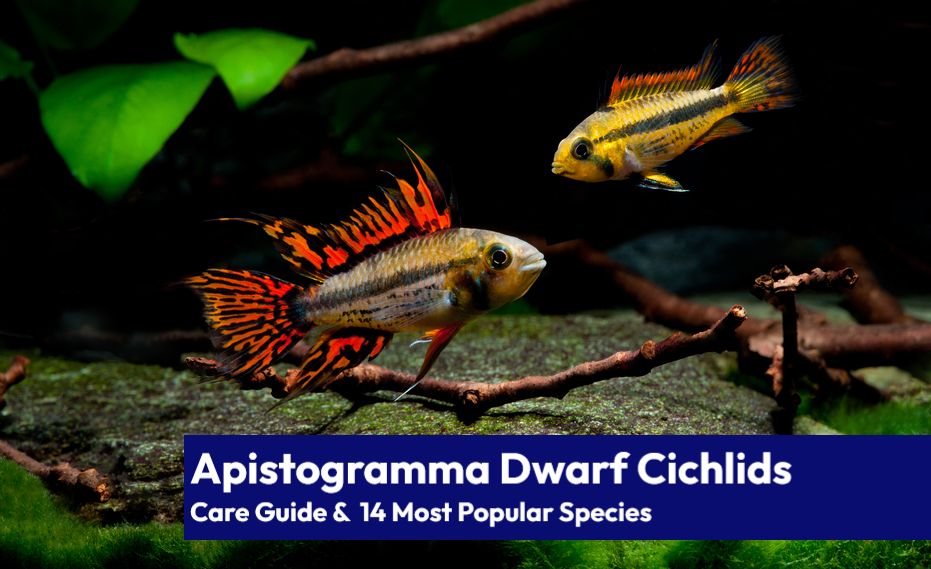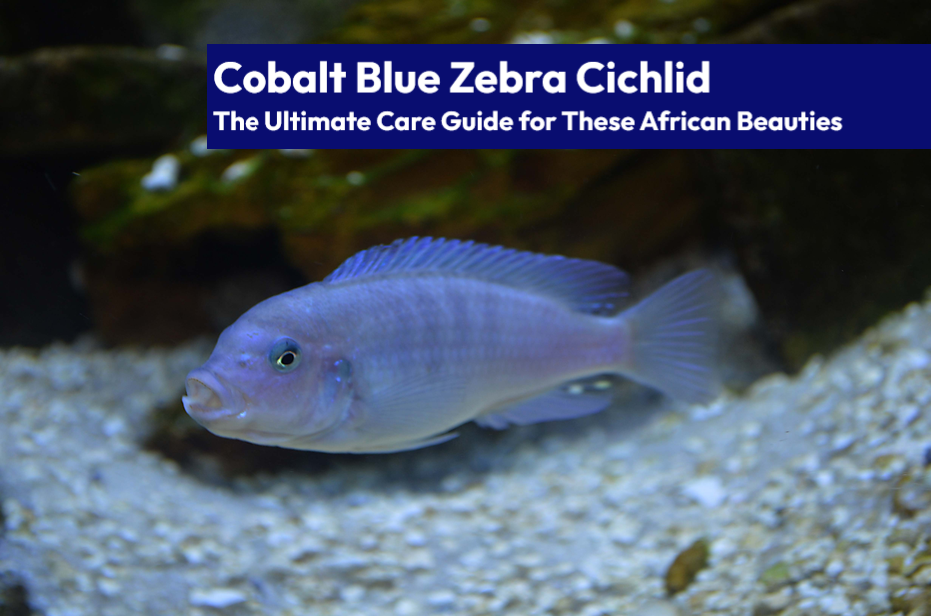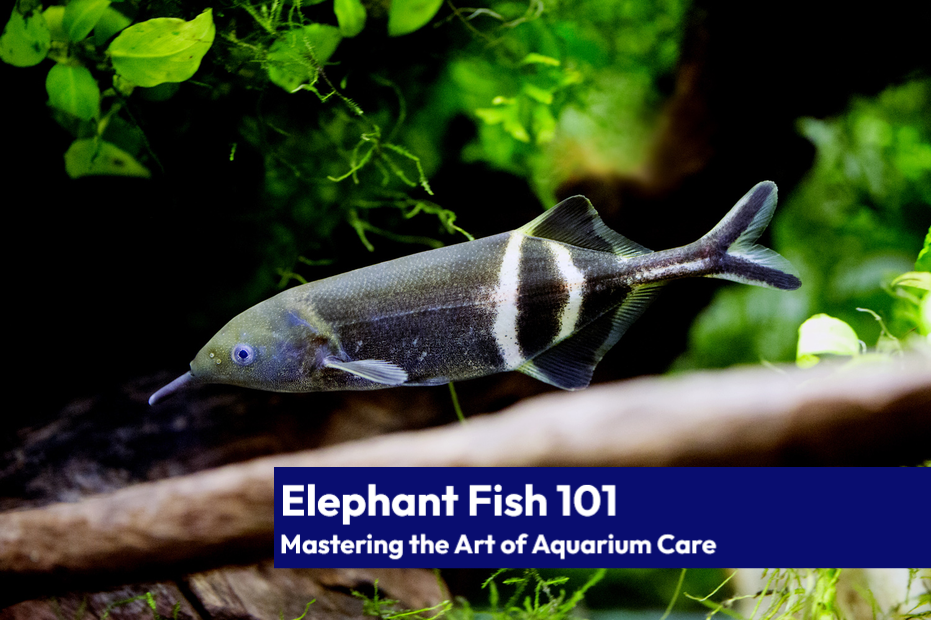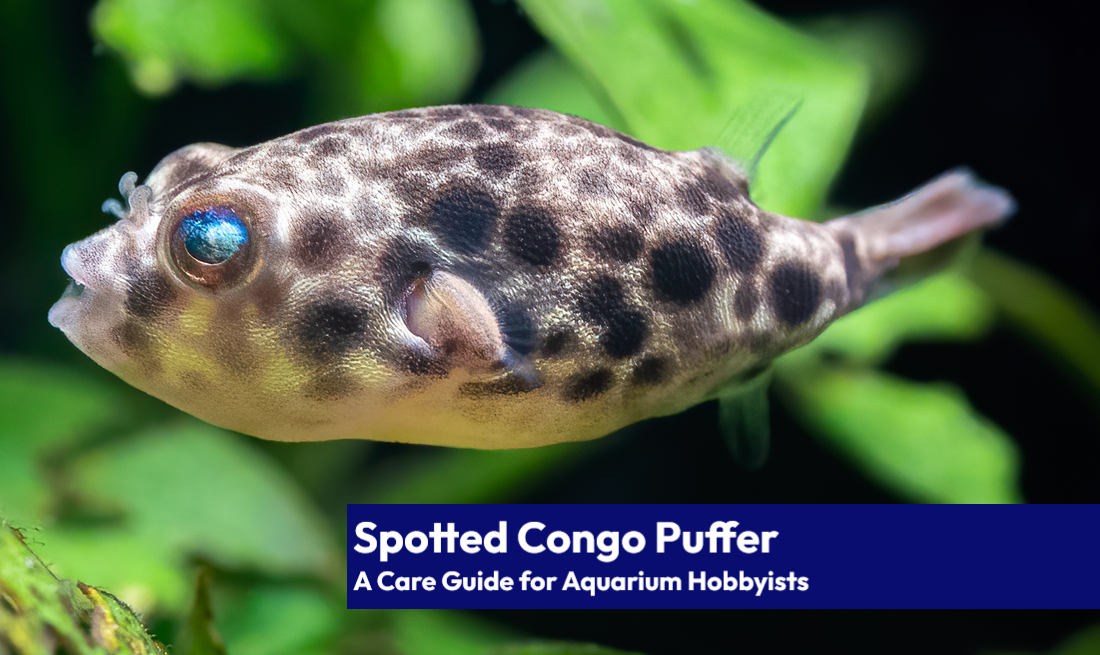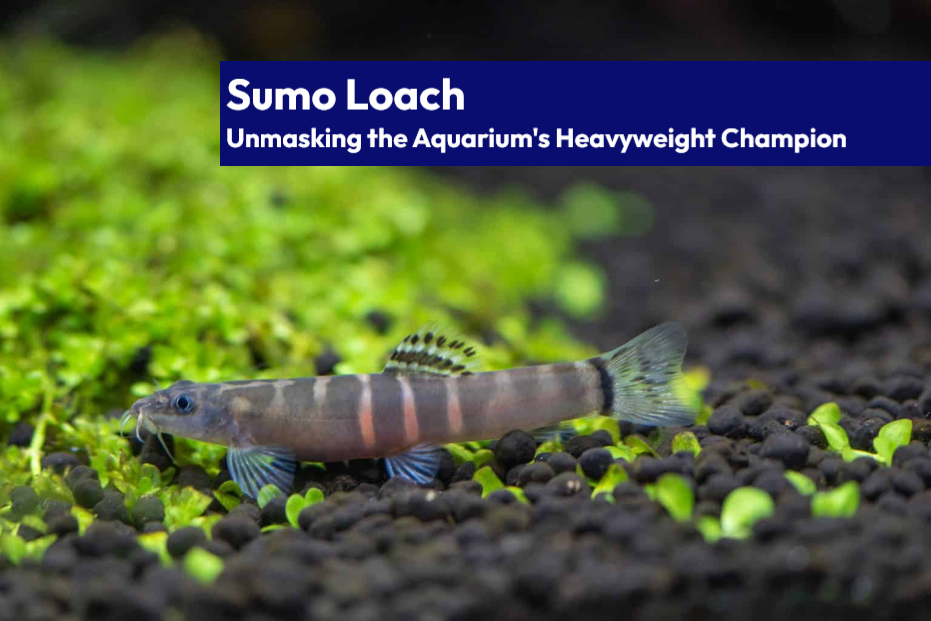Imagine a bustling underwater metropolis, teeming with activity, color, and life. At the very heart of this aquatic city lies a crew of unsung heroes – the bottom feeders! These fascinating fish are the diligent custodians of your aquarium, working tirelessly to keep your underwater world pristine and vibrant. Like skilled detectives scouring every nook and cranny, bottom feeders are always on the lookout for their next meal, leaving no stone unturned in their pursuit of algae, detritus, and other morsels.
In this enthralling deep dive, we’ll explore the captivating realm of bottom feeder fish, where you’ll discover their unique characteristics, the best species for your aquarium, and how to care for these essential aquatic allies.
Why Bottom Feeders Belong in Your Aquarium
Bottom feeders play a crucial role in maintaining a healthy and balanced aquarium ecosystem. These amazing creatures scavenge for leftover food and algae, keeping your tank clean and reducing the buildup of harmful waste. By doing so, they prevent the growth of harmful bacteria and contribute to the overall well-being of your aquarium.
Benefits of Bottom Feeders
- Natural cleanup crew: They help maintain tank cleanliness by consuming uneaten food, algae, and detritus.
- Biological balance: They contribute to the nitrogen cycle, breaking down waste and preventing ammonia spikes.
- Aesthetics: Bottom feeders add variety and interest to your aquarium, creating a more dynamic and engaging environment for both fish and observers.
Choosing the Best Bottom Feeder Fish for Your Aquarium
Picking the perfect bottom feeder fish for your aquarium can be both exciting and challenging. With so many types of bottom dwellers available, it’s essential to consider factors such as their compatibility with other fish, temperament, habitat requirements, and dietary needs. Below we’ve listed all the most popular bottom feeders in the aquarium hobby, and even added some snails and shrimp that are honorable mentions.
Types of Bottom Feeders
Catfish
Catfish are one of the most popular choices for bottom dwellers in freshwater aquariums. They come in various sizes and shapes, from the small and peaceful Corydoras to the larger and more aggressive Redtail catfish. Catfish are known for their distinctive whisker-like barbels, which they use to search for food.

Corydoras catfish, often called “Corys,” are undeniably one of the most endearing and delightful bottom dwellers you’ll ever come across! Their small, armored bodies and distinctive whisker-like barbels make them a favorite among aquarists. As peaceful and sociable creatures, they’re happiest when kept in groups and can often be seen swimming together in search of food, adding a touch of charm and dynamism to your tank.
| Ideal Water Parameters | Required Tank Size |
|---|---|
| Temperature: 72-78°F (22-25.5°C) | 20 gallons minimum |
| pH: 6.0-7.5 | |
| Hardness: 2-12 dGH |

Pictus catfish are renowned for their striking appearance and energetic personality. With a silver body adorned with black spots, a forked tail, and long barbels, these catfish are undoubtedly eye-catching. They are active, curious, and even exhibit playful behavior, making them a captivating addition to any community tank with similarly sized or larger tank mates.
| Ideal Water Parameters | Required Tank Size |
|---|---|
| Temperature: 75-81°F (24-27°C) | 55 gallons minimum |
| pH: 6.0-8.0 | |
| Hardness: 4-15 dGH |

The unique and almost otherworldly Glass catfish is sure to spark fascination in any aquarium enthusiast. With their nearly transparent bodies, you can observe their inner workings, including their bones and organs. These schooling fish are peaceful by nature and are best kept in groups of at least five, creating an enchanting sight as they swim gracefully in unison.
| Ideal Water Parameters | Required Tank Size |
|---|---|
| Temperature: 72-80°F (22-27°C) | 30 gallons minimum |
| pH: 6.5-7.5 | |
| Hardness: 8-12 dGH |
4. Upside-Down Catfish

The peculiar Upside-Down catfish is a true conversation-starter, renowned for its unusual habit of swimming upside down. This fascinating adaptation allows them to access food in tight spaces and on the water’s surface. With a mottled brown and black appearance, these peaceful and hardy fish are an excellent choice for community tanks, bringing a sense of wonder and fun to your aquarium.
| Ideal Water Parameters | Required Tank Size |
|---|---|
| Temperature: 72-79°F (22-26°C) | 30 gallons minimum |
| pH: 6.0-7.5 | |
| Hardness: 5-12 dGH |

Otocinclus catfish, affectionately known as “Otos” or “Dwarf suckers,” are petite, diligent algae eaters that will tirelessly work to keep your aquarium sparkling clean. Their small size and gentle nature make them a perfect addition to peaceful community tanks, particularly those with live plants. Otos are happiest in groups, and watching them navigate the tank together is a real treat for any aquarist.
| Ideal Water Parameters | Required Tank Size |
|---|---|
| Temperature: 72-82°F (22-28°C) | 10 gallons minimum |
| pH: 6.0-7.5 | |
| Hardness: 6-15 dGH | |
6. Striped Raphael Catfish

The Striped Raphael catfish, also known as the Humbug or Talking catfish, sports a beautifully patterned body with horizontal black and white stripes, making it a striking addition to any aquarium. As nocturnal creatures, they tend to be more active during the evening and night, and their unique “talking” ability – created by grinding their pectoral fin spines – adds an interesting auditory element to your tank.
| Ideal Water Parameters | Required Tank Size |
|---|---|
| Temperature: 75-82°F (24-28°C) | 55 gallons minimum |
| pH: 6.0-7.5 | |
| Hardness: 4-12 dGH |

Bumblebee catfish, named for their charming yellow and black striped patterns, are an alluring and captivating addition to any community aquarium. These small, peaceful catfish are relatively shy, often hiding during the day and emerging to forage for food at night. Their calm demeanor and striking appearance make them a popular choice among aquarists who appreciate their unique charm.
| Ideal Water Parameters | Required Tank Size |
|---|---|
| Temperature: 72-79°F (22-26°C) | 30 gallons minimum |
| pH: 6.0-8.0 | |
| Hardness: 4-12 dGH |
Loaches
Loaches are another popular choice among aquarium enthusiasts. They have elongated bodies and are usually found in shades of brown, black, and gray. Clown loaches and Kuhli loaches are two of the most popular species for aquariums, known for their unique looks and engaging personalities.
1. Clown Loach

Clown Loaches are an all-time favorite among aquarists, thanks to their striking appearance and playful behavior. Sporting bright orange bodies with black bands, these energetic fish are known for their inquisitive nature and love for hiding spots. Although they can grow quite large, their peaceful demeanor makes them a fantastic addition to a community aquarium with adequate space.
| Ideal Water Parameters | Required Tank Size |
|---|---|
| Temperature: 77-86°F (25-30°C) | 75 gallons minimum |
| pH: 6.0-7.5 | |
| Hardness: 3-12 dGH |
2. Kuhli Loach

Kuhli Loaches, often referred to as “eel-like” due to their slender bodies, are an intriguing and unique addition to any aquarium. Their nocturnal nature, combined with their love for burrowing and exploring, brings an air of mystery to your tank. Kuhli Loaches are social creatures, preferring to be kept in groups, and their peaceful nature makes them a great choice for community setups.
| Ideal Water Parameters | Required Tank Size |
|---|---|
| Temperature: 75-86°F (24-30°C) | 20 gallons minimum |
| pH: 5.5-7.0 | |
| Hardness: 0-10 dGH |
3. Yoyo Loach

Yoyo Loaches, named for the distinct “Y-O-Y-O” pattern on their bodies, are curious and active fish that bring a sense of excitement to any aquarium. They are social creatures and enjoy being kept in small groups. Their playful behavior and compatibility with similarly sized, non-aggressive tank mates make them an excellent addition to a community tank.
| Ideal Water Parameters | Required Tank Size |
|---|---|
| Temperature: 75-86°F (24-30°C) | 40 gallons minimum |
| pH: 6.0-7.5 | |
| Hardness: 3-10 dGH |
4. Zebra Loach

The Zebra Loach, known for its striking black and yellow striped pattern, is a charming and peaceful addition to any community aquarium. They are social fish, preferring to be kept in groups, and will happily coexist with other non-aggressive species. Their active nature and attractive appearance make them a popular choice among aquarists.
| Ideal Water Parameters | Required Tank Size |
|---|---|
| Temperature: 73-79°F (23-26°C) | 30 gallons minimum |
| pH: 6.0-7.0 | |
| Hardness: 3-12 dGH |
5. Dojo Loach

Dojo Loaches, also known as Weather Loaches, are fascinating fish known for their ability to sense changes in atmospheric pressure, causing them to become more active before storms. Their elongated bodies, barbels, and peaceful nature make them a captivating addition to community tanks. They are hardy fish, making them a great choice for beginners.
| Ideal Water Parameters | Required Tank Size |
|---|---|
| Temperature: 50-75°F (10-24°C) | 30 gallons minimum |
| pH: 6.0-8.0 | |
| Hardness: 3-12 dGH |

Hillstream Loaches are a unique and visually appealing addition to any aquarium, with their flattened bodies and sucker-like mouths adapted for life in fast-flowing waters. These peaceful fish are excellent algae eaters and will tirelessly graze on the surfaces in your tank, helping to keep it clean. Their distinctive appearance and industrious nature make them a fascinating choice for aquarists.
| Ideal Water Parameters | Required Tank Size |
|---|---|
| Temperature: 68-75°F (20-24°C) | 20 gallons minimum |
| pH: 6.5-7.5 | |
| Hardness: 3-10 dGH |
Plecos
Plecos, or plecostomus, are a diverse group of bottom feeders with over 150 species. Common plecos are well-known algae eaters and can grow quite large, while the smaller Bristlenose pleco is more suited to smaller tanks. Be mindful of their size and potential growth when adding a pleco to your aquarium.
1. Bristlenose Pleco

The Bristlenose Pleco is a widely popular and captivating fish, characterized by its unique appearance and hardworking nature. Sporting tentacle-like appendages on their faces, these fascinating creatures are excellent algae eaters, helping to keep your aquarium clean. They are peaceful, hardy, and relatively small, making them a great choice for a variety of community tanks.
| Ideal Water Parameters | Required Tank Size |
|---|---|
| Temperature: 60-80°F (15-27°C) | 20 gallons minimum |
| pH: 6.5-7.5 | |
| Hardness: 6-10 dGH |
2. Common Pleco

The Common Pleco is a well-known and beloved species among aquarists. They are peaceful and hardy fish, making them a suitable addition to larger community tanks. While they are voracious algae eaters when young, as they grow, their diet shifts to include more protein. Be mindful of their potential size, as they can grow up to 24 inches in length.
| Ideal Water Parameters | Required Tank Size |
|---|---|
| Temperature: 72-86°F (22-30°C) | 100 gallons minimum |
| pH: 6.5-7.5 | |
| Hardness: 4-15 dGH |
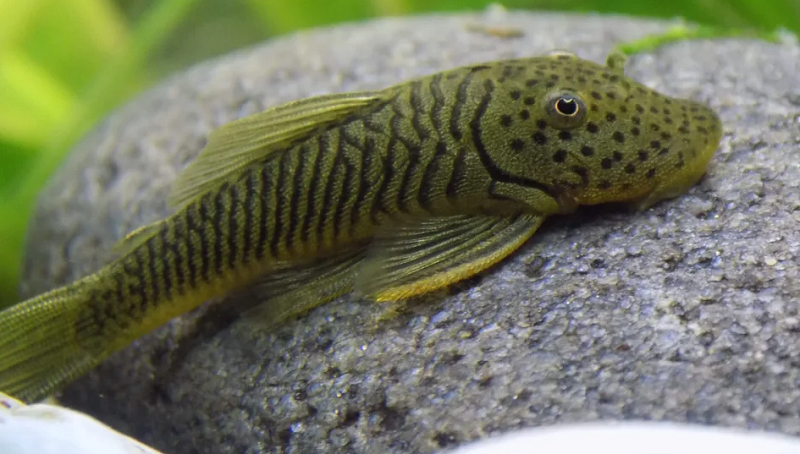
The Rubber Lip Pleco is a smaller and more manageable pleco species, making it a popular choice for aquarists with modestly sized tanks. They are excellent algae eaters, and their peaceful nature allows them to coexist harmoniously with a variety of tank mates. With their rubbery-looking lips and mottled pattern, they bring both utility and charm to your aquarium.
| Ideal Water Parameters | Required Tank Size |
|---|---|
| Temperature: 71-78°F (22-26°C) | 30 gallons minimum |
| pH: 6.5-8.0 | |
| Hardness: 5-15 dGH |
4. Clown Pleco

The Clown Pleco is an appealing and colorful fish, boasting striking yellow and black bands that give them their name. These small plecos are relatively peaceful and can coexist well with other community fish. They are especially fond of driftwood, which is essential for their digestion and overall health.
| Ideal Water Parameters | Required Tank Size |
|---|---|
| Temperature: 73-82°F (23-28°C) | 20 gallons minimum |
| pH: 6.8-7.6 | |
| Hardness: 5-12 dGH |
5. Sailfin Pleco

The Sailfin Pleco is an impressive species, characterized by their large dorsal fin and intricate patterns. They are relatively peaceful fish but can become territorial as they grow. While they consume algae, they also require a varied diet that includes vegetables and protein. Keep in mind, these plecos can grow quite large, reaching up to 20 inches in length.
| Ideal Water Parameters | Required Tank Size |
|---|---|
| Temperature: 74-86°F (23-30°C) | 125 gallons minimum |
| pH: 6.5-7.5 | |
| Hardness: 6-15 dGH |
6. Royal Pleco

The Royal Pleco is a majestic and eye-catching species with an intriguing pattern and distinct, elongated snout. They are relatively peaceful fish and can coexist well with other non-aggressive tank mates. Royal Plecos are particularly fond of driftwood, which is essential for their diet and well-being. Keep in mind that they can grow quite large, reaching up to 17 inches in length, and require a spacious tank.
| Ideal Water Parameters | Required Tank Size |
|---|---|
| Temperature: 72-86°F (22-30°C) | 120 gallons minimum |
| pH: 6.5-7.5 | |
| Hardness: 4-15 dGH |

The Blue Phantom Pleco is a stunning species, boasting a beautiful blueish hue and intricate, dark markings. They are relatively peaceful fish and can make a captivating addition to a community tank with other non-aggressive species. While they are efficient algae eaters, it is essential to supplement their diet with additional vegetables and protein sources.
| Ideal Water Parameters | Required Tank Size |
|---|---|
| Temperature: 73-82°F (23-28°C) | 55 gallons minimum |
| pH: 6.5-7.5 | |
| Hardness: 5-12 dGH |
Freshwater Shrimp
Freshwater shrimp are small, colorful invertebrates that add a unique touch to any aquarium. They are excellent scavengers and algae eaters, helping to maintain a clean tank environment. Some popular freshwater shrimp species include the Red Cherry shrimp, Amano shrimp, and Ghost shrimp.
1. Red Cherry Shrimp

The Red Cherry Shrimp is a popular and striking freshwater shrimp species known for its vibrant red coloration. These small, peaceful creatures are easy to care for, making them a great choice for beginners. They are efficient algae eaters and scavengers, helping to keep your aquarium clean and tidy.
| Ideal Water Parameters | Required Tank Size |
|---|---|
| Temperature: 65-85°F (18-29°C) | 5 gallons minimum |
| pH: 6.5-8.0 | |
| Hardness: 3-10 dGH |
2. Amano Shrimp

Amano Shrimp, named after the famous aquarist Takashi Amano, are renowned for their exceptional algae-eating capabilities. Their translucent bodies with subtle markings make them an attractive addition to any aquarium. They are hardy and peaceful, making them suitable for a variety of tank setups.
| Ideal Water Parameters | Required Tank Size |
|---|---|
| Temperature: 65-80°F (18-27°C) | 10 gallons minimum |
| pH: 6.5-7.5 | |
| Hardness: 3-12 dGH |
3. Ghost Shrimp

Ghost Shrimp, also known as Glass Shrimp, are a fascinating addition to any aquarium due to their transparent bodies, which provide a unique visual appeal. They are easy to care for, inexpensive, and can coexist peacefully with other small and non-aggressive tank mates. Ghost Shrimp are skilled scavengers, helping to keep your tank clean.
| Ideal Water Parameters | Required Tank Size |
|---|---|
| Temperature: 65-80°F (18-27°C) | 5 gallons minimum |
| pH: 7.0-8.0 | |
| Hardness: 3-15 dGH |

The Blue Dream Shrimp is a Neocaridina variant like the Cherry Shrimp but a stunning freshwater shrimp, sporting a captivating deep blue coloration. These small, peaceful creatures are relatively hardy and easy to care for, making them an excellent choice for both beginners and experienced aquarists. They are efficient algae eaters and can help keep your aquarium clean.
| Ideal Water Parameters | Required Tank Size |
|---|---|
| Temperature: 65-85°F (18-29°C) | 5 gallons minimum |
| pH: 6.5-8.0 | |
| Hardness: 3-10 dGH |

Crystal Red Shrimp are a striking and highly sought-after shrimp species, known for their intricate red and white patterns. They are a bit more delicate and require stable water parameters, making them better suited for experienced aquarists. Their beautiful appearance and peaceful nature make them a prized addition to a well-maintained aquarium.
| Ideal Water Parameters | Required Tank Size |
|---|---|
| Temperature: 62-76°F (17-24°C) | 5 gallons minimum |
| pH: 5.8-7.4 | |
| Hardness: 4-6 dGH |

Snowball Shrimp are an appealing species characterized by their translucent bodies with small white dots resembling snowballs. These peaceful and easy-to-care-for shrimp make a great addition to a community tank with other small, non-aggressive species. They are efficient algae eaters and can help maintain a clean and healthy aquarium.
| Ideal Water Parameters | Required Tank Size |
|---|---|
| Temperature: 65-80°F (18-27°C) | 5 gallons minimum |
| pH: 6.5-7.5 | |
| Hardness: 3-12 dGH |

The Bamboo Shrimp, also known as the Wood Shrimp, is a unique and eye-catching species known for its fan-like appendages used for filter feeding. These peaceful shrimp are quite large compared to other freshwater shrimp species and can make an intriguing addition to a community tank. They require a well-established aquarium with adequate water flow to provide the necessary microorganisms for their filter-feeding habits.
| Ideal Water Parameters | Required Tank Size |
|---|---|
| Temperature: 68-77°F (20-25°C) | 20 gallons minimum |
| pH: 6.5-7.5 | |
| Hardness: 3-10 dGH |
Pro Tip: Freshwater shrimp can be sensitive to water parameters and require a well-cycled and stable aquarium. It is essential to monitor and maintain the water quality to ensure the health and well-being of your shrimp. Additionally, providing hiding spots, such as plants, rocks, or shrimp tubes, can help your shrimp feel secure and reduce stress.
Snails
Snails are often overlooked but can be a valuable addition to your aquarium cleanup crew. They consume algae and detritus, assisting in the maintenance of a healthy tank. Common aquarium snails include the Mystery snail, Nerite snail, and Malaysian Trumpet snail.
1. Nerite Snail

Nerite Snails are a popular freshwater snail species, known for their attractive, rounded shells and excellent algae-eating capabilities. They come in a variety of colors and patterns, making them an appealing addition to your aquarium. They are hardy and easy to care for, making them ideal for beginners.
| Ideal Water Parameters | Required Tank Size |
|---|---|
| Temperature: 72-78°F (22-26°C) | 5 gallons minimum |
| pH: 7.0-8.5 | |
| Hardness: 6-12 dGH |
2. Mystery Snail

Mystery Snails are a captivating and popular species, characterized by their striking, spiral-shaped shells. They are available in a variety of colors, including gold, blue, and ivory. These peaceful snails are efficient algae eaters and scavengers, helping to keep your tank clean and tidy.
| Ideal Water Parameters | Required Tank Size |
|---|---|
| Temperature: 68-84°F (20-29°C) | 5 gallons minimum |
| pH: 7.0-7.5 | |
| Hardness: 5-15 dGH |
3. Ramshorn Snail

Ramshorn Snails are a unique and eye-catching species, named for the distinct spiral shape of their shells, which resemble a ram’s horn. They are available in various colors, including red, brown, and blue. Ramshorn Snails are effective algae eaters and can help maintain a clean aquarium environment.
| Ideal Water Parameters | Required Tank Size |
|---|---|
| Temperature: 64-84°F (18-29°C) | 5 gallons minimum |
| pH: 7.0-8.0 | |
| Hardness: 5-15 dGH |
4. Malaysian Trumpet Snail

The Malaysian Trumpet Snail is an intriguing species, known for its elongated, conical shell. These nocturnal snails are excellent scavengers and can help prevent the build-up of detritus in your aquarium. They are also beneficial for aerating the substrate, preventing the formation of anaerobic pockets in the tank.
| Ideal Water Parameters | Required Tank Size |
|---|---|
| Temperature: 70-80°F (21-27°C) | 5 gallons minimum |
| pH: 7.0-8.0 | |
| Hardness: 5-15 dGH |
5. Rabbit Snail

Rabbit Snails are a distinctive and engaging species, characterized by their elongated shells and rabbit-like appearance. They are peaceful snails and can coexist harmoniously with other non-aggressive tank mates. Rabbit Snails are efficient scavengers and can help keep your aquarium clean and tidy.
| Ideal Water Parameters | Required Tank Size |
|---|---|
| Temperature: 76-84°F (24-29°C) | 10 gallons minimum |
| pH: 7.0-8.5 | |
| Hardness: 2-15 dGH |
6. Assassin Snail

The Assassin Snail is a unique and fascinating species, recognized for its predatory nature and striking, conical shell. They are particularly useful for controlling pest snail populations in your aquarium. These snails are peaceful with other species and can be kept in a community tank setup.
| Ideal Water Parameters | Required Tank Size |
|---|---|
| Temperature: 75-80°F (24-27°C) | 10 gallons minimum |
| pH: 7.0-8.0 | |
| Hardness: 5-15 dGH | |
Compatibility and Tank Mates
Before adding any bottom feeders to your aquarium, make sure they are compatible with the other fish in your tank. Research the specific requirements and behavior of each species to ensure a peaceful coexistence. Avoid aggressive or predatory fish that might view your bottom feeders as a tasty snack.
Water Parameters and Habitat Requirements
It’s essential to consider the specific water parameters and habitat requirements of your chosen bottom feeder fish. Each species will have its preferred water temperature, pH, and hardness levels. Additionally, consider the type of substrate and hiding spots needed for your bottom dwellers to feel safe and comfortable.
Feeding Habits and Dietary Needs
Understanding the feeding habits and dietary requirements of your bottom feeder fish is crucial to their health and well-being. Each species will have its unique dietary preferences, such as algae, detritus, or specific types of food.
Setting Up the Perfect Environment for Bottom Feeders
Creating a comfortable and natural environment for your bottom dwellers is key to their happiness and health. From substrate selection to water conditions, every aspect of your aquarium setup should cater to their needs.
Substrate Selection and Setup
The type of substrate you choose for your aquarium will have a significant impact on the well-being of your bottom feeders. Some species, like Corydoras catfish, prefer soft, sandy substrates to protect their sensitive barbels. Others, like loaches, may require a mix of sand and gravel for burrowing.
Aquarium Decoration and Hiding Spots
Bottom dwellers are often shy and require hiding spots to feel secure. Create a natural and enriching environment with caves, driftwood, and plants that allow them to hide, explore, and rest. Ensure that the decorations are safe, with no sharp edges that could injure your fish.
Filtration System Considerations
A proper filtration system is crucial for maintaining a healthy aquarium environment. Consider the specific needs of your bottom feeders when choosing a filter. Some fish prefer gentle water currents, while others thrive in stronger flow. Opt for a filter that can accommodate these preferences and effectively maintain water quality.
Temperature and Lighting Requirements
Maintaining the appropriate water temperature and lighting conditions is essential for the well-being of your bottom dwellers. Research the specific requirements for your chosen species and invest in a reliable heater and thermometer to monitor and maintain these conditions. Remember, some bottom feeders prefer dim lighting or periods of darkness, so adjust your lighting setup accordingly.
Maintaining Water Quality and Parameters
Regularly test your aquarium water for parameters such as pH, ammonia, nitrite, and nitrate levels. Proper water conditions are crucial for the health of your bottom feeders. Perform regular water changes and maintenance to ensure a stable and clean environment.
Proper Care and Feeding for Bottom Feeders
Taking care of your bottom dwellers involves understanding their feeding habits, dietary needs, and monitoring their overall health.
Feeding Guidelines and Recommended Food Types
Each species of bottom feeder has unique dietary requirements. Some will thrive on a diet of algae wafers, while others may require sinking pellets or a mix of fresh and frozen foods. Research the specific needs of your chosen species and provide a varied diet to ensure they receive all necessary nutrients.
Identifying and Addressing Nutritional Deficiencies
Watch for signs of nutritional deficiencies in your bottom feeders, such as reduced activity, lack of growth, or color fading. Adjust their diet accordingly to provide the necessary nutrients and consult a veterinarian or aquarium specialist if problems persist.
How to Avoid Overfeeding and Maintaining a Clean Tank
Overfeeding can lead to water quality issues and health problems for your bottom feeders. Feed your fish in small amounts, ensuring that they consume the food within a few minutes. Remove any uneaten food promptly to prevent water quality issues and monitor your tank for signs of excess waste or algae growth.
Common Health Issues and How to Prevent Them
As with any fish, bottom dwellers can be susceptible to various health issues. Being proactive in preventing and treating diseases is essential for maintaining a healthy aquarium environment.
Recognizing Signs of Stress and Illness
Monitor your bottom feeders for signs of stress or illness, such as lethargy, loss of appetite, or unusual behavior. Identifying and addressing these issues early can prevent more severe problems and ensure the well-being of your fish.
Common diseases and parasites affecting bottom feeders include Ich, fin rot, and bacterial infections. To prevent these issues, maintain optimal water conditions, and avoid overcrowding your tank. If you notice any signs of illness, quarantine the affected fish and treat them with the appropriate medications, following the advice of a veterinarian or aquarium specialist.
Quarantine Procedures for New Fish
Before introducing new fish to your aquarium, quarantine them for at least two weeks to ensure they are healthy and disease-free. This practice will help prevent the spread of diseases and parasites to your existing fish population.
Regular Maintenance to Ensure a Healthy Environment
Perform regular water changes, filter maintenance, and tank cleaning to maintain a healthy environment for your bottom feeders. Keeping your aquarium in optimal condition will reduce the likelihood of disease outbreaks and keep your fish happy and healthy.
Breeding Bottom Feeder Fish
Breeding bottom feeders can be a rewarding and fascinating aspect of aquarium keeping. Understanding the breeding process, preparing the right conditions, and caring for eggs and fry are all essential aspects of successful breeding.
Understanding the Breeding Process
Each species of bottom feeder has unique breeding behaviors and requirements. Research the specific needs of your chosen fish to ensure you can provide the necessary conditions for successful breeding.
Preparing the Breeding Tank and Conditions
Set up a separate breeding tank with the appropriate substrate, hiding spots, and water parameters for your chosen species. Adjust the temperature, pH, and lighting conditions as needed to encourage breeding behavior.
Caring for Eggs and Fry
Once your bottom feeders have spawned, provide the necessary care for the eggs and fry. This may involve removing the adults from the breeding tank, adjusting water conditions, or providing specific food for the fry. Research the needs of your specific species to ensure the best chance of success.
Tips for Successful Breeding
- Be patient: Breeding bottom feeders can take time, and multiple attempts may be necessary.
- Maintain optimal water conditions: A stable and healthy environment is crucial for successful breeding.
- Observe the fish: Watch for changes in behavior, as these can indicate that spawning is imminent.
Frequently Asked Questions (FAQs)
Can I keep multiple bottom feeder species together?
Yes, you can keep multiple species of bottom feeders together, provided they are compatible and your aquarium is large enough to accommodate their needs.
How many bottom feeders should I have in my aquarium?
The number of bottom feeders you should have depends on the species, tank size, and the bioload of your aquarium. Research the specific requirements of your chosen species and ensure you have adequate space and filtration capacity.
What should I do if my bottom feeders are not eating?
If your bottom feeders are not eating, try offering a different type of food, adjusting the feeding schedule, or checking the water parameters. Consult a veterinarian or aquarium specialist if the problem persists.

Tim Priest, a renowned aquarium expert with over 15 years of experience in aquatic gardening and fish education, is dedicated to helping enthusiasts create stunning and thriving aquatic environments. As the founder of LearnTheAquarium.com, Tim shares his wealth of knowledge, passion, and expertise through engaging articles, educational resources, and personalized advice.
Discover the secrets to creating captivating underwater landscapes and maintaining healthy aquatic ecosystems. Join Tim on an exciting journey and let your aquarium adventure begin!

